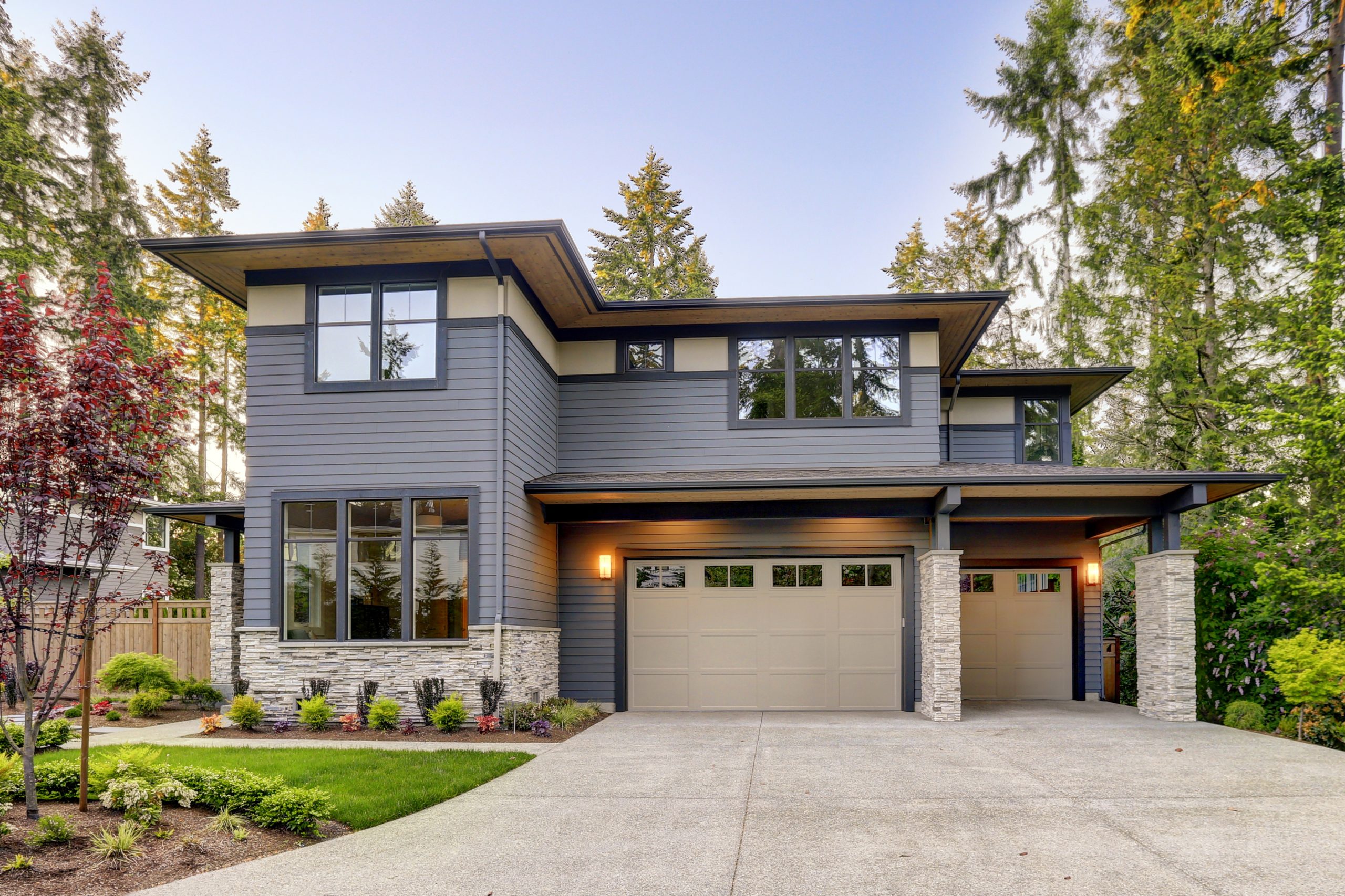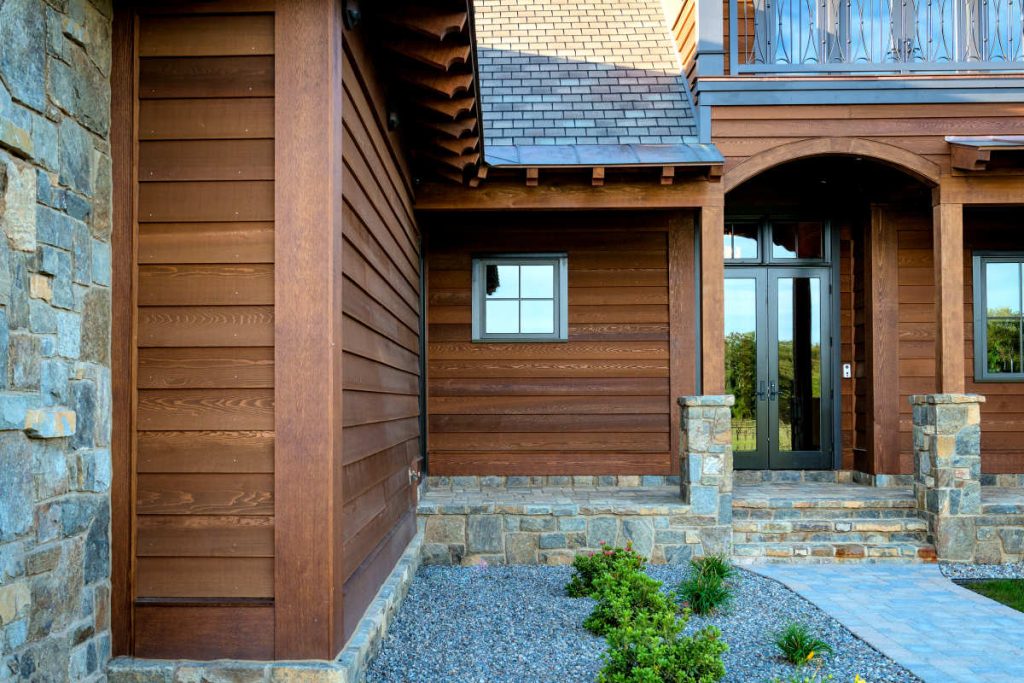Published on: April 14, 2023

Wood siding is classic and offers an attractive home appearance to build the ultimate curb appeal. But before you install wood siding on your Seattle-area home, make sure you know all about it.
In this ultimate wood siding guide, you’ll find information on the various wood siding styles, benefits of wood siding, and more!
Take some time to review wood siding styles to gain a better understanding of design options for your home.

Bevel siding uses flat boards that your siding contractor cuts into isosceles triangles. Your contractor then attaches these boards horizontally up your home where the thicker side of the board faces down.
One benefit of this type of siding is that it uses fewer resources because you can get two pieces of siding out of one piece of wood due to the way it is cut. The boards do overlap and involve nailing the boards together. Often, these boards are six, eight, 10, or 12 inches wide.
Get an attractive vertical appearance with board and batten siding. Boards are usually eight inches wide and your contractor will hang them vertically with nailing strips that attach to the wall framing. The edges of the boards go right up against one another with a minuscule gap that allows for expansion. Then a smaller vertical board called a batten that is one-to-two inches wide goes over the joint.
You’ll see this style most frequently on homes from the Gothic Revival or in Bungalow styles. The milling process was incredibly simple, which is why this style rose to popularity around the 1850s.
This is a solid dimensioned lumber that is one of the simplest forms of wood siding. A contractor will install it horizontally to build a shingling effect up the side of your home.
Clapboard has no patterns added. Generally, it is ¾ of an inch thick but it can come in varying widths with six-inch and 8-inch being the most popular.
Using this siding, you’ll get a beveled appearance but in a much more precise manner. That’s because the boards fit together via rabbets at the bottom. The rabbets ensure that each piece fits together precisely under the previous board for a clean appearance.
However, looking at finished siding, you won’t be able to tell the difference between Dolly Varden and bevel or clapboard siding.
Bungalow homes popularized double ogee siding around the 19th century. One board of double ogee siding creates the appearance of two smaller pieces. You can also find triple ogee boards in some cases.
Using these boards, contractors can create tighter horizontal lines on your home using fewer boards since the siding involves less overlapping. It also helps speed up the installation process, which can make it more affordable.
Some boards come with rabbets at the bottom for a precise appearance and simple installation.
This form of siding dates back to the 1870s when the industrial revolution took off. As mechanization at the lumber mills became popular, wood was easier to craft into unique shapes and appearances.
The characteristic appearance of novelty drop siding is a swoop at the top with a hidden rabbet at the bottom. It appears somewhat like shiplap but has precise space like Dolly Varden.
This siding type creates the appearance of a log cabin without using as much wood or actually using logs to build the structure. Rustic siding is often face-nailed horizontally. Modern siding also includes a rabbet at the bottom to ensure each siding piece fits together snugly.
Shake-style siding has a rough texture and appearance to offer a more rustic and natural appearance than shingles. However, the installation process for shakes mirrors that of shingles where you place a large part of the shake over the preceding shake. The most popular era for this siding style was during colonial America.
Shingle-style siding originated from wood siding. Shingles historically covered the entire exterior of a home. It was popularized with Cape Cod-style homes. Generally, shingles are 15, 18, or 24 inches long and 6 or 13 inches wide.
Using shingles for siding was popular during the Victorian and Queen Anne home design eras. That’s because they are decorative and the gable ends fit well with these home styles.
While the most popular style for shingles is in rectangles, you can also find them in fish scale, diamond, round, half-cove, and arrow. When you want ornate woodwork on your home’s exterior, you can alternate shingle shapes for an ornate appearance.
This is one of the more modern wood siding styles because it comes from the mid-20th century. It involves boards that are six, eight, or 10 inches wide installed horizontally. There is a rabbet at the bottom to create self-spacing.
V-groove differs from shiplap in that it has a slight chamfer cut at the top and bottom of each piece, creating a slight V shape between each board.
Installing wood siding provides many benefits. Here’s a look at some reasons to consider this siding type.
You can freshen the appearance of your home or change it entirely using paint. Wood is easy to paint and you can easily create the style and character you want for your home.
Wood siding is eco-friendly because it comes from a renewable source. It is also biodegradable, which means it won’t fill a landfill once you’re done with it. Producing wood siding is also very energy efficient.
Whether you’re dealing with holes, warps, or rotted siding pieces, you can easily replace one board or use putty to fill gaps. Just be sure you know what you’re doing before removing a piece of siding as you don’t want to leave your home unprotected for an extended period.
While wood siding is attractive and offers many benefits for your home, it also has its detractors. Consider these wood siding cons before installing them on your home.
Wood siding is one of the most expensive siding types out there. Consider whether a wood alternative might be better for your budget and where you live.
Wood siding requires frequent painting and staining. You’ll need to inspect your siding frequently to watch out for signs of pests, such as termites. Rotting wood, mold, and mildew are also major concerns and might involve replacing boards frequently to prevent the problem from spreading.
Paint will fade with time, meaning there will be years when your home is not as vibrant while you await the timeframe to repaint and stain your siding.
Advancements in siding manufacturing have made it possible to get the appearance of wood siding without the expense or maintenance requirements. Composite siding and even vinyl siding offer an attractive alternative that will look just like wood siding to you, your neighbors, and visitors. As you search for the best siding for you, talk with the experts at 2FL Windows, Siding, and Roofing. Schedule a free estimate now.
Further Reading:
Comments are closed.

Read the latest articles about siding.

[…] RainDrop is an ideal secondary weather barrier for fiber cement, vinyl, foam-backed vinyl, and wood sidings.Another important component is metal and self-adhered flashing’s. These products are used around […]
[…] Wood siding is timeless and irresistible. Homes with this finish are often popular because of how beautiful wood siding is. Sure, it takes some maintenance to keep the wood looking great, but it also adds unique character and charm to your home. […]